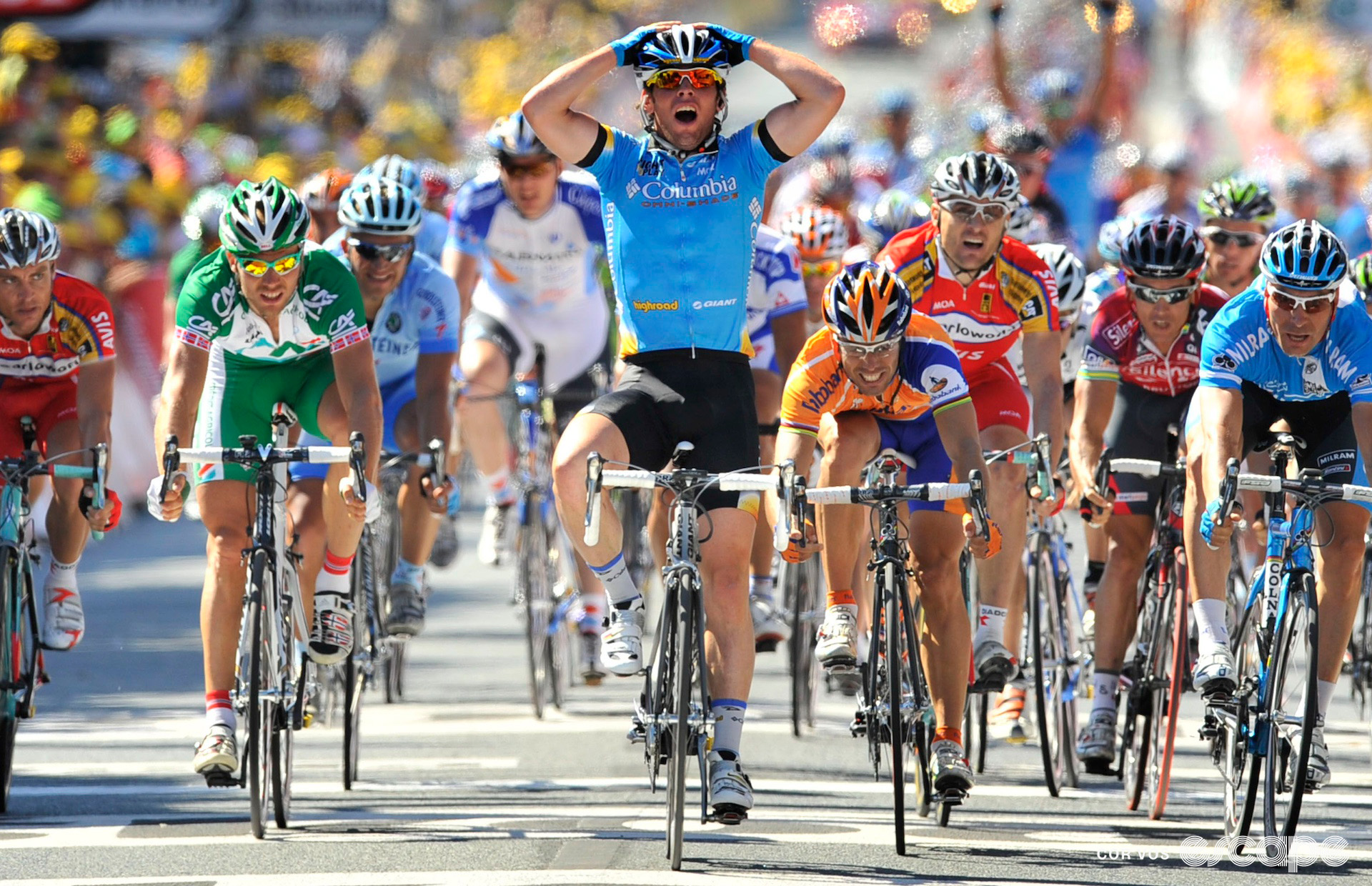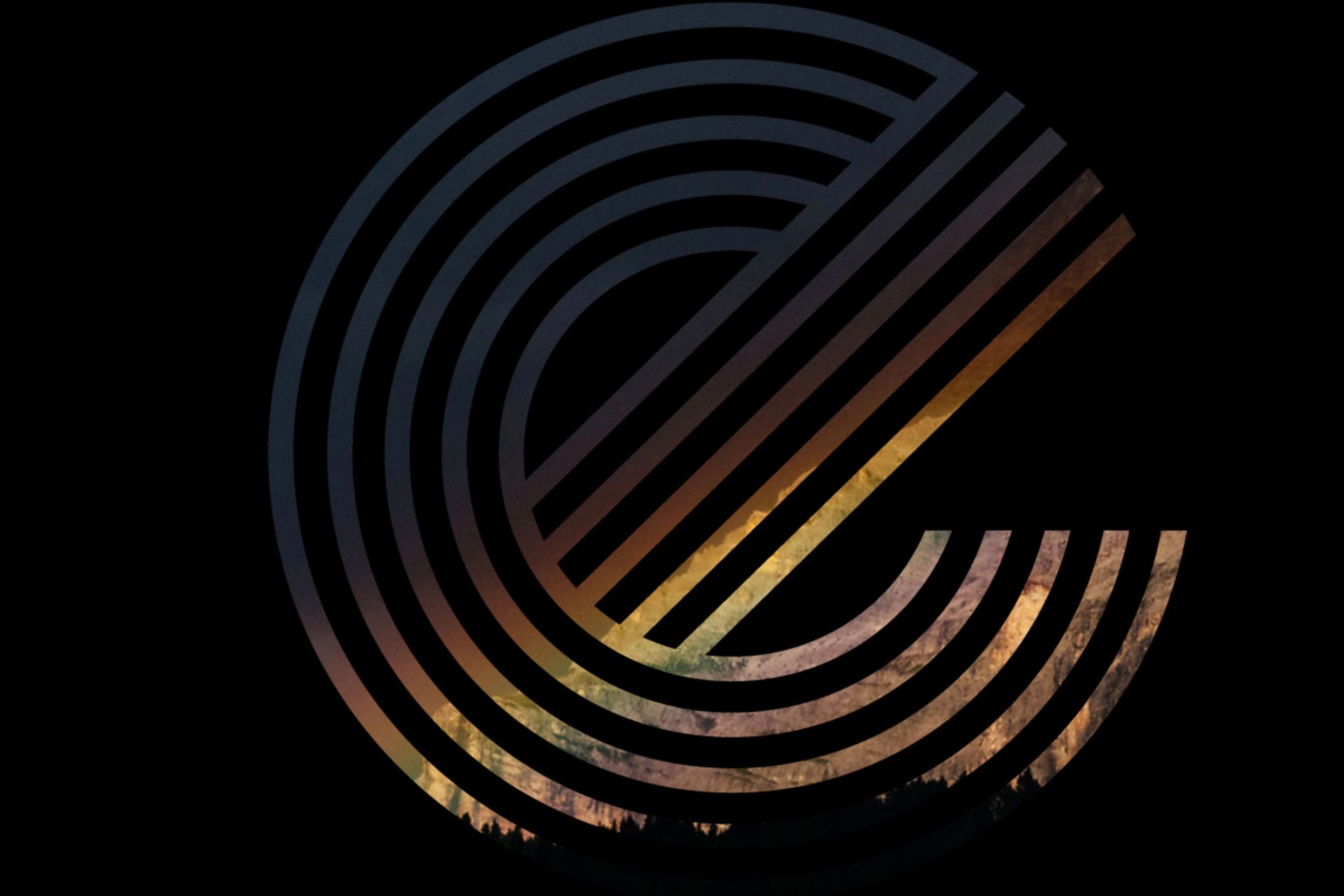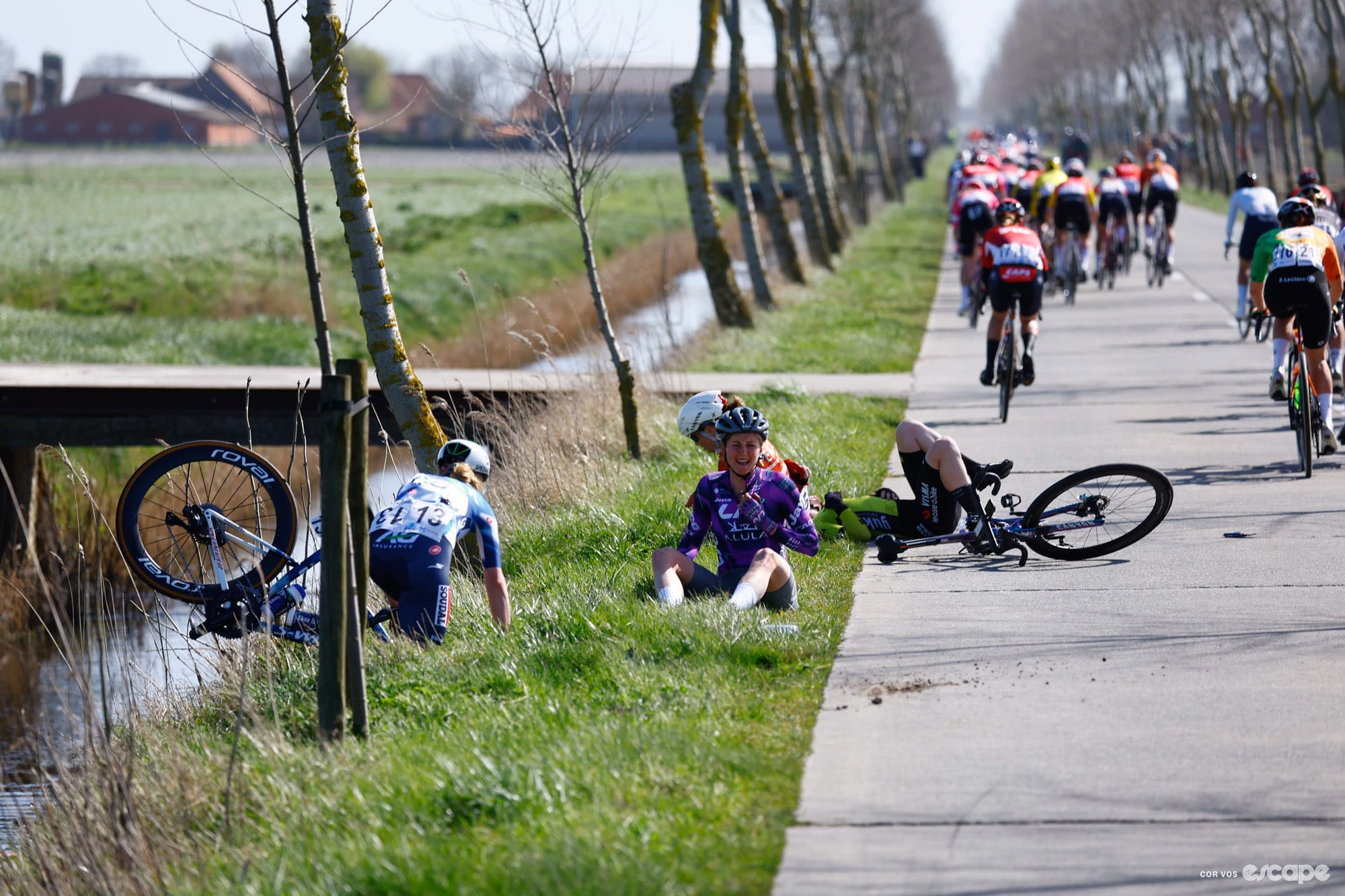It has finally been confirmed – we’re pretty sure this time – that Mark Cavendish will in fact retire at the end of this season, or rather, he will not compete as a pro again after this weekend’s exhibition race, the Singapore Criterium. He’s technically not “raced” since that historic final Tour de France, which is appropriate really.
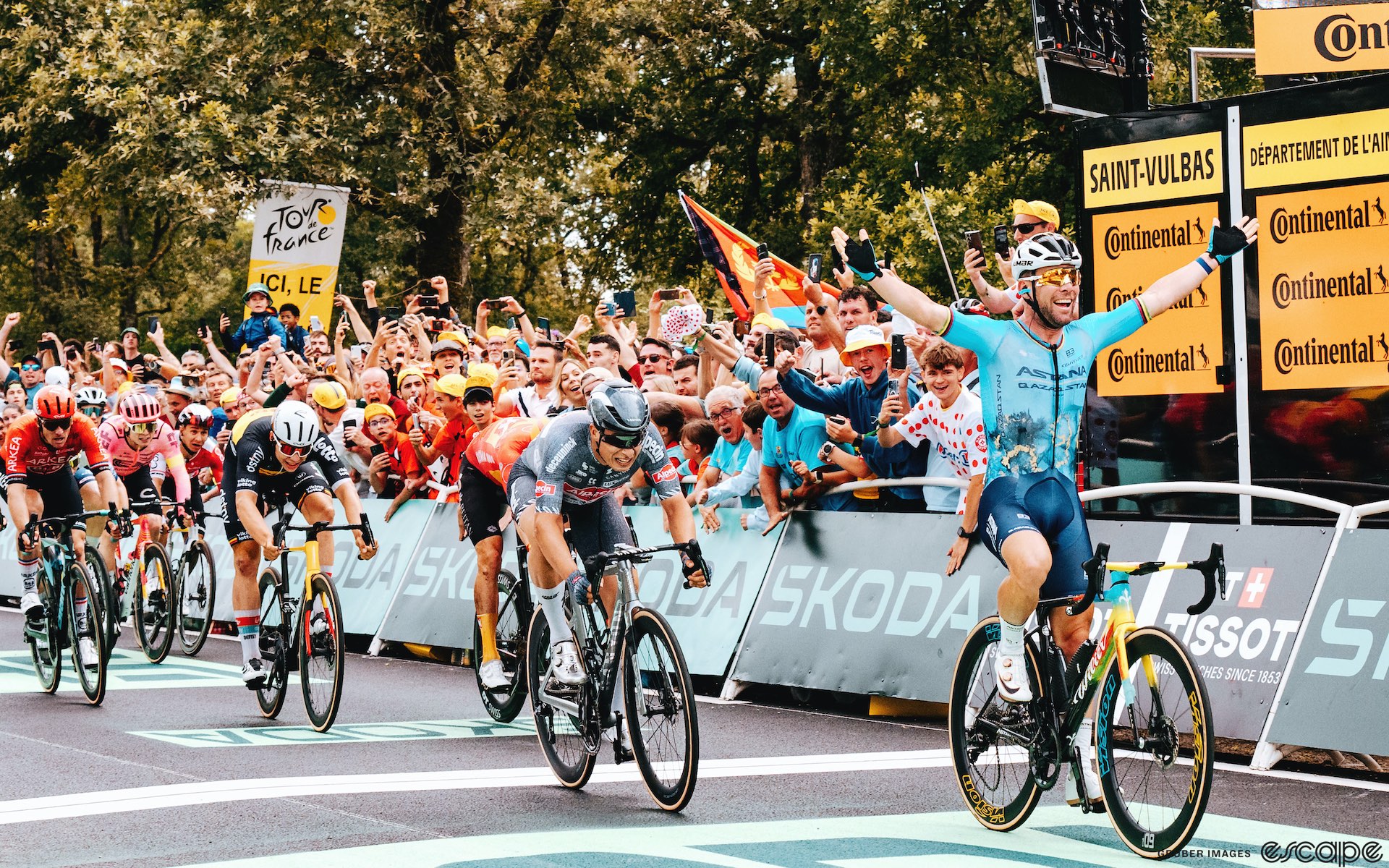
“It's not even a bike race, it's the Tour de France,” Cavendish told CyclingNews at the Saitama Criterium. “Like, I don't understand why it's not like that for every bike rider. I don't understand it. If you’ve won one stage of the Tour it changes your life … It’s always been hard for me to get motivated for anything except the Tour.”
The Manxman made the Tour his life, and after 35 wins across 15 editions, he got his fairytale ending – and then stopped.
When you arrive at an ending, it’s hard not to look over your shoulder and see how far you’ve come. For Mark Cavendish, the Tour’s greatest ever sprinter and stage-win record holder, it all began in 2008. Then a 23-year-old whippersnapper, the ‘Manx Missile’ was by no means an unknown, but if 2007 was his coming-of-age, 2008 was the year he ascended to the throne.
So join us in rewatching the day Cavendish ‘opened his account’ at the Tour de France. It is July 9th 2008, stage 5 of the biggest race of the year, and the 173-strong peloton is racing from Cholet to Châteauroux …
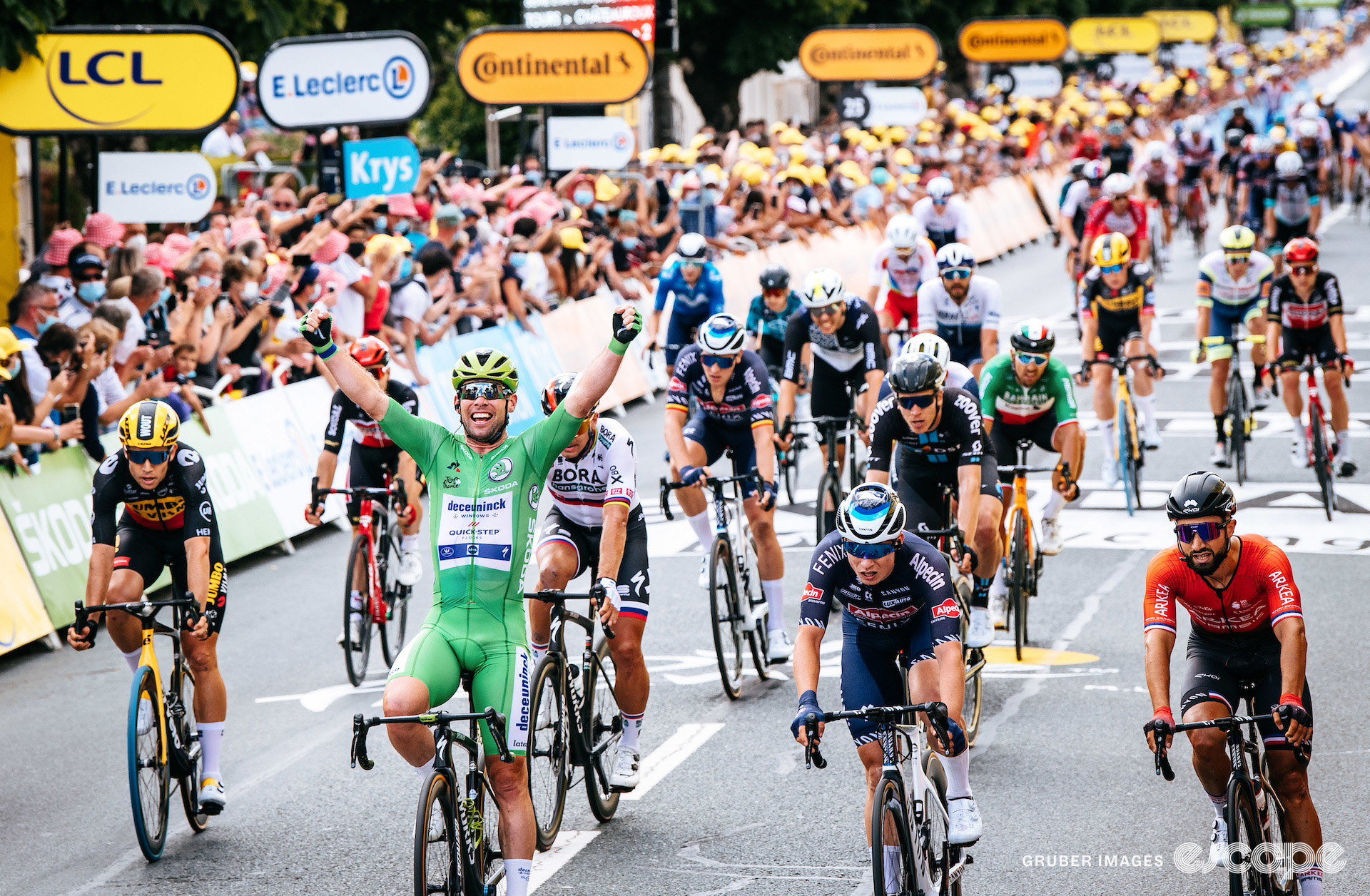
Setting the stage:
- By stage 5, the 2008 Tour had seen victories for first-time yellow jersey-wearer Alejandro Valverde (Caisse d’Epargne), Thor Hushovd (Crédit Agricole), Samuel Dumoulin (Cofidis) and Stefan Schumacher, who by winning the stage 4 ITT had taken over the race lead from stage 3 breakaway rider Romain Feuillu (Agritubel).
- Schumacher led the race by 12 seconds to Kim Kirchen (Team Columbia) and David Millar (Garmin-Chipotle), with Cadel Evans (Silence-Lotto) in a strengthened fourth-place having put some time into some of his key rivals on the TT bike. Schumacher would soon lose yellow but he went on to win the 53-kilometre stage 20 ITT ahead of Fabian Cancellara (CSC ProTeam). However, a few months later, the German would have all results from the start of the Tour onwards stripped by the UCI after he, and later teammate Bernhard Kohl, tested positive for a variant of EPO in October 2008. That was the final death knell for the Gerolsteiner team which folded at the end of the season.

- Cycling was still in its doping era in 2008, two and three years after the “wins” of Floyd Landis and Lance Armstrong. Despite renewed attempts by the race organiser to clamp down on doping, there was bad news as early as stage 1 as Manuel Beltrán tested positive for EPO in a post-stage control. He was immediately withdrawn by his team Liquigas, but it did not end there. Several others would be forced out or voluntarily withdraw by the end of three weeks’ racing, including a few of stage winners and the entire Saunier Duval-Scott team.
- Tom Boonen was also a notable absentee after testing positive for cocaine in May. The then-27-year-old Belgian had won two stages and the green jersey at the 2007 Tour – bringing his stage-win tally to six – and though cocaine was not subject to sanctions by either the UCI or WADA, he was barred from both that year's Tour de Suisse and the summer’s main event.
- Also missing from the startlist was 2007 overall winner Alberto Contador whose Astana team was not invited to the 2008 edition. The Spaniard opted instead to try for the Giro-Vuelta double in 2008. Spoiler alert: he did it.

- Cadel Evans was the best-placed GC rider from the previous season and wore the number 1 bib. His campaign had got off to a solid start, especially in the stage 4 ITT in which he gave himself an advantage over many other GC favourites.
- The Australian’s biggest rivals for the yellow jersey were long-time Grand Tour stalwart Carlos Sastre (CSC ProTeam), Haimar Zubeldia (Euskaltel-Euskadi), Valverde, and 2007 Vuelta champion Denis Menchov (Rabobank ProTeam).
- The sprint field was pretty darned strong, with the powerhouse Erik Zabel (Milram) in his last appearance before retirement, three-time green jersey winner Robbie McEwen (Silence-Lotto), Óscar Freire (Rabobank ProTeam), and the popular Norwegian Thor Hushovd (Crédit Agricole) headlining.
- And of course, among the top sprinters was a young man from a small island in the Irish Sea called Mark Cavendish who had already established a reputation as an exceedingly confident and extraordinarily talented sprinter who was expected to do big things at this Tour. The 23-year-old had already amassed 20 pro wins, including a second-consecutive Scheldeprijs title and two stages of the Giro d’Italia earlier in the season, not to mention his efforts on the track, which included a second Madison world title that March with Bradley Wiggins.

How it happened:
N.B. we chose 10 minutes of highlights, but there is coverage of the entire stage available on YouTube if you wish to watch hours of a 232-kilometre sprint stage.
- The longest stage of the 2008 Tour was also one of the flattest – only stage 21’s run-in to the Champs-Élysées had fewer vertical metres, besides the two ITTs (79.5 km in total!) – but even so, the breakaway was a hot ticket.
- Two days after Samuel Dumoulin won stage 3 into Nantes from a four-man breakaway, his French colleagues Florent Brard (Cofidis), Lilian Jégou (Française des Jeux) and national champion Nicolas Vogondy (Agritubel) went clear early as the Tour peloton headed on a fairly steady bearing eastward.

- By the first intermediate sprint after 33 km, the trio’s gap was over eight minutes. It wasn’t deathly slow, though, with the leaders covering almost 46 km in the first hour of racing.
- The gap began to fall steadily after that as the sprinters’ teams were determined not to miss out for the second time in three days.
- Further back in the peloton it was a far more relaxed affair with many hoping only to arrive in Châteauroux unscathed. One man who failed to do so was stage 1-winner and first-time yellow jersey wearer Valverde, but he was soon back on the bike and grinning down the camera lens after visiting the medical car to attend to some road rash.

- Though the average speed gradually dropped as the hours passed, the peloton continued to gain on the leaders, bringing the gap well under control before the finale.
- Along with Gerolsteiner, the most active squads on the front were Team Columbia, Crédit Agricole and Liquigas for Cavendish, Thor Hushovd and Francesco Chicchi respectively. There was a worrying moment for Team Columbia when powerhouse George Hincapie punctured about 10 km from the line, but he was soon back to the front to finish his job.
- Our highlights pick up inside the last 10 km, the breakaway still holding a little over half a minute, and holding on to hope.
- The pace was really high in the last few kilometres running into town, and there was an unfortunate moment 5 km out when it transpired Aurélien Passeron (Saunier Duval-Scott) had collided with a spectator who took a while to get up – the TV moto lingered rather too long over the incident, but mercifully left the medics to their duties once the Frenchman was back on the move, albeit gingerly; he would not start the following stage.

- Gerolsteiner’s Heinrich Haussler then came down in a right-hander with 3 km to go as the peloton charged desperately into the gap that was still close to 20 seconds.
- With 1,300 metres remaining and the peloton breathing down his neck, Vogondy launched from the break in a desperate attempt to spoil the bunch’s fun.
- His companions were swept up in no time and the writing was on the wall for the man in the bleu-blanc-rouge livery; he looked over his shoulder once, twice, three times, and it was all over.
- Under the flamme rouge, Columbia's Kim Kirchen hit the front in the green jersey – he’d placed first in the previous day’s ITT, though he did not know it yet… – and pulled hard for Cavendish as the sprinters fought for position.
- Gerald Ciolek was Team Columbia’s last lead-out man – and the youngest rider in the race – and with his work done, Cavendish was launched 250 metres from the line as Thor Hushovd opened his sprint.
- Vogondy was still clear, but only by a handful of metres, and the Frenchman’s hopes were dashed barely 10 metres short of the finish.
- With no one able to come past him, 23-year-old Cavendish sat bolt upright as he crossed the line and clapped both hands to his helmet, before throwing his arms wide and punching the air.

- Then comes the winner’s interview. This was the wider world’s first real introduction to Cavendish and we got the full picture: the pugnaciousness, the confidence-bordering-on-arrogance, and the ability to actually pull it all off – a foreshadowing of the next 15 years.
I woke up this morning and I said to the lads, 'I'm going to win today,' I just feel it, you know? It sounds arrogant, but I'd just prefer to say it on the line of confidence, you know? We've got such a strong team here and we've shown that the other days, and we had to come away with a stage sooner or later, and after the other day [he missed out on stage 2's first chance for sprinters], I wasn't going to let them down."
Stage 5 top 10:
- Mark Cavendish (Columbia)
- Óscar Freire (Rabobank Pro Team)
- Erik Zabel (Milram)
- Thor Hushovd (Crédit Agricole)
- Baden Cooke (Barloworld)
- Robert Hunter (Barloworld)
- Leonardo Fabio Duque (Cofidis, le Crédit par Téléphone)
- Robbie McEwen (Silence-Lotto)
- Francesco Chicchi (Liquigas)
- Julian Dean (Garmin-Chipotle)
Not-so brief analysis:
With contributions from Joe Lindsey.
- The organisation and control demonstrated by Team Columbia – managed by High Road Sports, hence the familiar ‘High Road’ brand – in the leadout is striking. There are other teams present, like Liquigas and Crédit Agricole, but the bright blue jerseys are very much in charge, which is particularly notable given they’d been very much the underdogs until recently. Just two seasons earlier (as T-Mobile), they’d won 18 races and only a few sprints, then in 2007 – Cav’s first full season – their win doubled to 36, with Cavendish and fellow young upstart Gerald Ciolek earning about half the total. 2008, however, saw the win rate rocket way up with victories spread far and wide. This was truly the year that the storied High Road team became a juggernaut. In just two years they’d completely overhauled the team and would rule the sprints until they came to their abrupt end.

- The closing speed is ridiculous. Some of this is a trick of the long lens at the finish line, but when the pack goes under the red kite they’re probably 200 or so meters behind Vogondy in the lead. About 50 seconds elapse between that point and the catch and another couple of seconds to the finish, which means the pack speed in that final km was close to 70 km/h, while Vogondy is himself going a still fast but not fast enough 55 km/h (calculations based on an assumed 200m gap). The field is making up 20-25 meters for every 100 meters covered.
- Vogondy makes a great move. And he doesn’t look back until 500m to go. But you can instantly see he loses belief in that moment. Why? Because he looks back twice more after that. The rider who believes in himself will check once for position, but then it’s full commitment. There’s no point in looking back again; either you hold them off or you don’t. The subsequent backward glances are a massive tell.

What happened next?
The young Cavendish would win again just a few days later, then again and again with back-to-back stages towards the end of the second week. Four down, 31 to go. The 23-year-old would then withdraw from the Tour on the morning of stage 15, and take a short break before travelling to his first Olympic Games in Beijing with none other than Bradley Wiggins as his Madison partner. The pair ultimately finished mid-pack as the Argentine duo of Juan Curuchet and Walter Pérez took gold, and just a week later, Cavendish began the last laps of his season at the relatively minor Tours of Ireland and Missouri, winning on six out of 12 race days.
His love story with the French Grand Tour continued the following year with a career-best six stage wins – but he had to wait until 2011 to win his first green jersey – and he’d keep coming back for more every season, bringing his tally up to 25 before the bubble burst on stage 1 of the 2014 race.
But Harrogate was not the end of the story, nor were the Epstein-Barr virus and mental health struggles that plagued him in the ensuing years. Cavendish almost saw his career fade away towards the end of 2020, but a breath of fresh air arrived with a Quick Step contract, which set him on the path to beating Eddy Merckx's stage win record, emphatically positioning himself front and centre in the hall of fame.
As for his fellow cast members on this stage:
- Freire raced on to win stage 14 and secure the one and only green jersey of his career, keeping it from Hushovd and the retiring Zabel, who had won six green jerseys between 1996 and 2001.
- In the race for the yellow jersey, Cadel Evans would wear the coveted maillot jaune for five days, but ultimately fell less than a minute short of the title for the second consecutive year. Carlos Sastre meanwhile soared to his first and only Grand Tour victory after putting two minutes into his rivals on the Alpe d’Huez early in week 3.
- If you take a look at the startlist and narrow it down to the youngest riders and/or debutants at the 2008 Tour, you’ll see plenty of familiar names. There’s Andy Schleck (CSC ProTeam), Chris Froome (Barloworld), Vincenzo Nibali (Liquigas), Mark Renshaw (Crédit Agricole), Adam Hansen (Team Columbia), Ryder Hesjedal (Garmin-Chipotle), Laurens Ten Dam (Rabobank ProTeam), among many others. To think that all but one of these are retired, some long-retired, is to realise just how extraordinary Cav’s longevity has been.

- Finally, what of Vogondy, the nearly man? That stage could have been a kingmaker for a relatively unknown Frenchman, but his name has diminished, internationally at least, as Cav’s was put up in lights. Vogondy would go on to win the first mountain stage of the 2010 Critérium du Dauphiné after a late attack from the favourites group that included race leader and eventual winner Janez Brajkovic (Radioshack) and Contador, a result made all the more meaningful given Vogondy’s career had been in jeopardy due to heart arrhythmia issues early in the season. He eventually retired at the end of 2013, ending his career with the team that would become Intermarché-Wanty after turning pro 17 years earlier with FDJ.
Escape reflections:
Jonny: Is the quality of re-uploaded race highlights to YouTube that bad or is this how people used to watch bike racing?!
Joe: Jonny’s full of it, the coverage quality is fine. This was 2008! In America we were still watching on Outdoor Life I think (or Vs or whatever the hell it was called) and there was no legit online streaming option. I was writing a live blog for Bicycling for people who didn’t have a TV handy at work and wanted to watch. And internet at the time was of the level where routinely any pirate coverage would freeze to the point that it was basically a slideshow of still images. I’m amazed this video is even in 16:9 format. [End “old man yells at cloud” rant]
Jonny: Were the crowds bigger back then? Is this because no-one had internet connection and there was nothing else to do on a Wednesday afternoon in July?
Kit: The crowds are great, and everyone’s actually watching, there aren’t phones clutched in sweaty palms in every frame.
Jonny: The commentators announce the victory in a humdrum fashion, like they’re at a village fete reading out a car registration plate because someone has parked their vehicle in such a way that it’s blocking other people in.
Joe: As a final note, there’s a comment in there about how British fans don’t appreciate what he’s done in other races (he’d already been a world track champion in the Madison, and of course had won two Giro stages earlier in 2008) and that Brits think the Tour and the Olympics are all there is to cycling. And I’m struck by that because while he’s right, this was just two years before Sky started, and which reinforced that for the UK, just as for the US, the Tour really is the only race that matters to most people (not hardcore road racing fans, but most people). He’s Sir Mark Cavendish for one big reason: he won more Tour stages than anyone.
Did we do a good job with this story?

